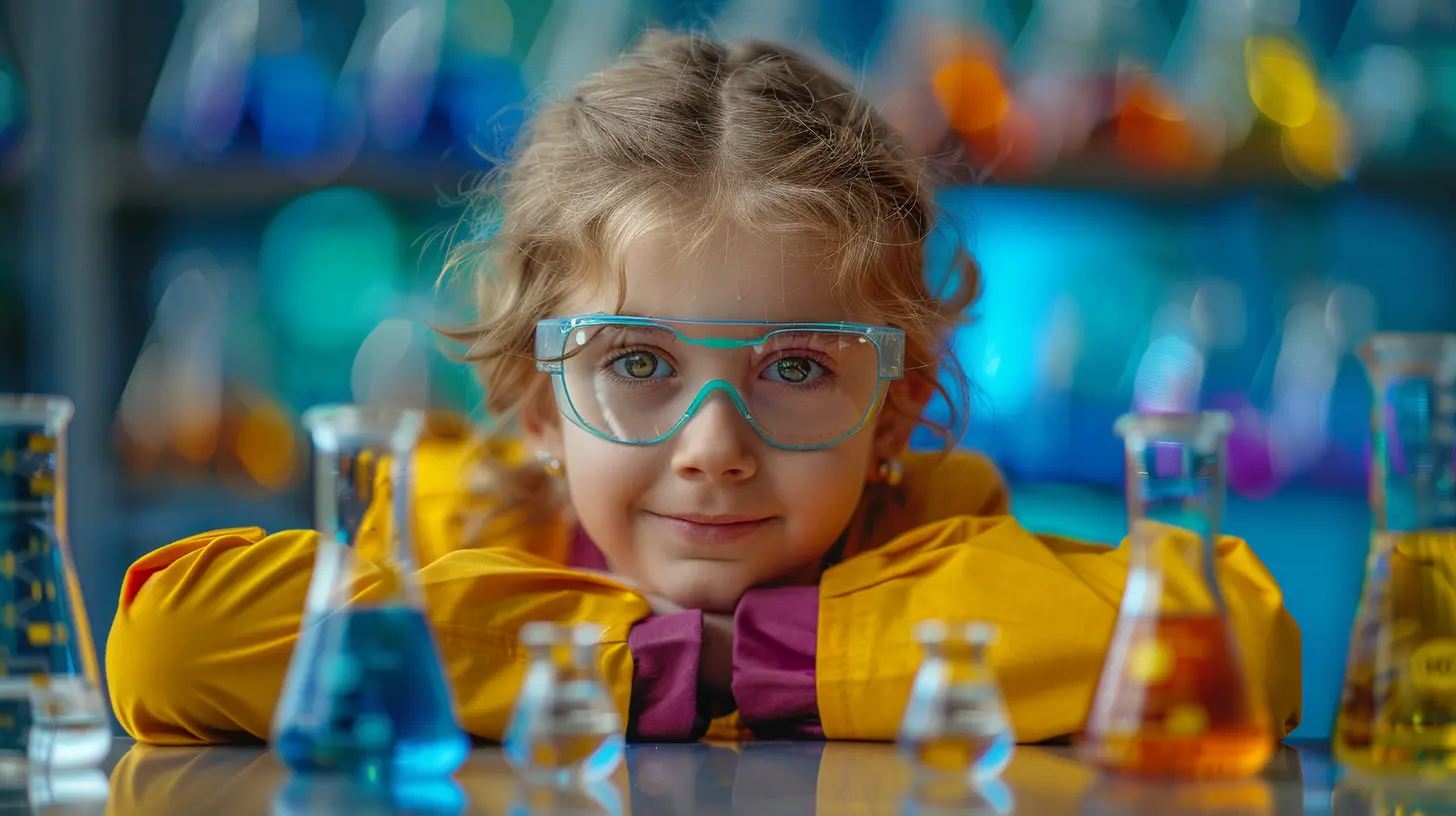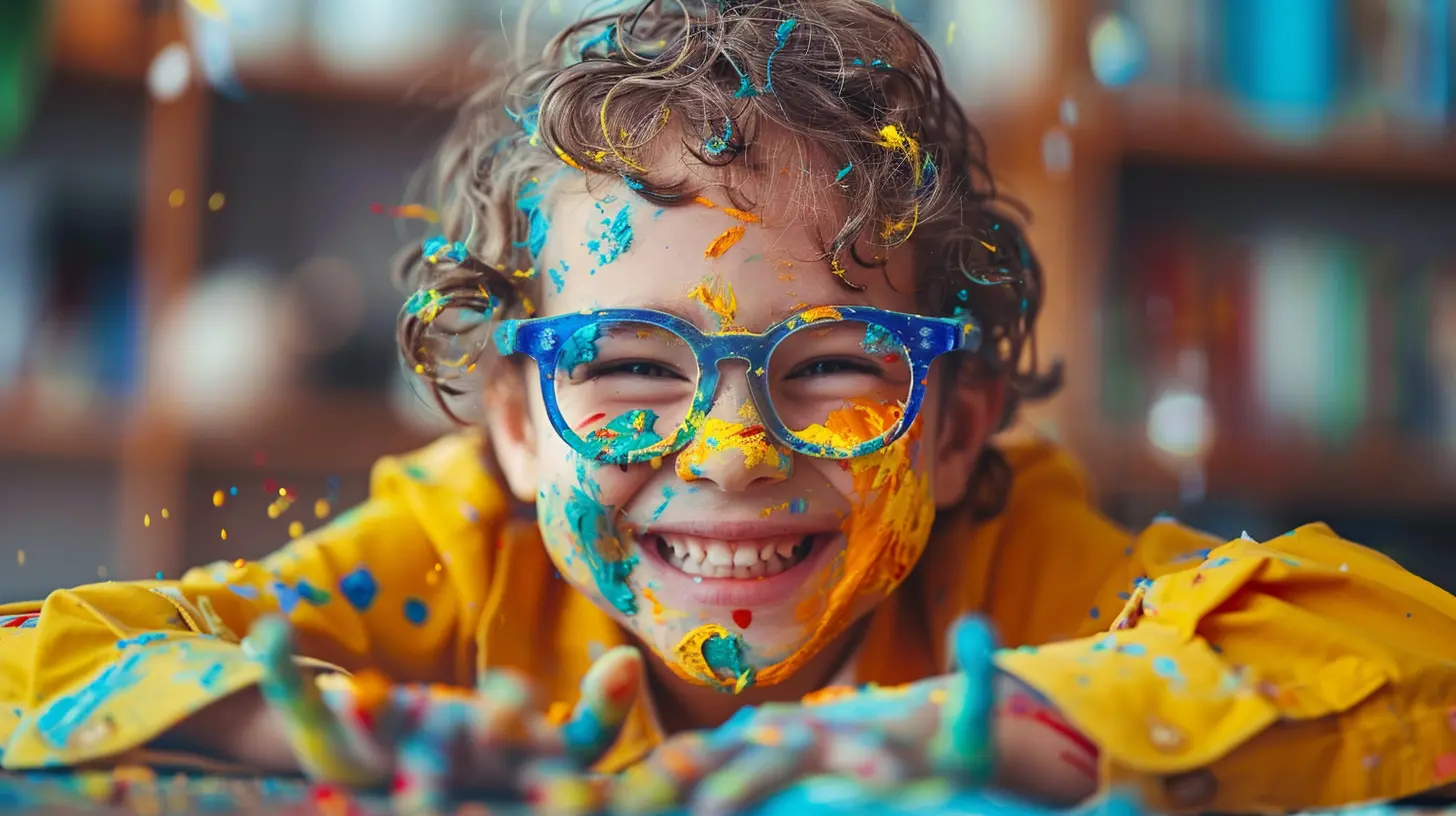The Science of Play: Learning Through After-School Fun
13 November 2025
Let’s be honest, when you think of learning, what pops into your head? Probably a classroom, textbooks, or sitting at a desk, right? But here’s a little secret many of us overlook: Kids do a whole lot of learning when they’re simply playing—especially after school when their minds are craving freedom and their imaginations are ready to take flight.
Welcome to the fascinating world where science meets silliness—the world of play. It’s not just downtime or a break from the "serious stuff"; it’s the real-deal learning zone dressed up in superhero capes, LEGO bricks, and backyard adventures. Let’s dive into why play after school isn’t ‘just play’—it’s brain-boosting, life-shaping magic.
Why After-School Hours Hold So Much Power
Think about it—kids spend nearly six hours a day in structured learning environments. By the time the bell rings, their brains are like over-soaked sponges. That’s why what happens after school can either refresh or exhaust them further.After-school play gives their minds a chance to breathe, stretch, and reset. It’s during this less-structured time that learning often happens most naturally. Whether it’s climbing trees, building forts, or collaborating on an elaborate pretend restaurant, these moments are full of lessons in problem-solving, communication, and emotional regulation.
It’s not wasted time—it’s golden time.
The Science Bit (But Let’s Keep It Simple)
Okay, we won’t bore you with jargon, but here’s something cool: neuroscientists and child development experts are on the same page—play is essential for brain development.When kids engage in imaginative or physical play, several parts of their brain light up like a Christmas tree. They’re working on:
- Executive function: That’s the brain’s CEO. Planning, decision-making, and self-control are all getting a workout.
- Creativity and innovation: Ever seen your child turn a cardboard box into a spaceship? That’s not just cute—it’s genius-level thinking.
- Social intelligence: Learning how to share, communicate, and empathize during play is a massive win for long-term success.
So yes, while it might look like your child is just playing “kitchen” with plastic food, their brain is brewing five-star learning.
Types of Play That Pack A Learning Punch
Not all play is created equal, and that’s a good thing. The more variety, the better. Here are a few powerful types of play your child is probably already doing (and learning tons from).1. Unstructured Free Play
This is the kind of play kids initiate and lead themselves. No adult instruction, no rules—just pure imagination.Think dress-up, building with blocks, or creating new games with friends in the yard. This kind of play boosts creativity and problem-solving skills big time.
Pro-Tip: Let them be bored sometimes. Boredom is the birthplace of creativity.
2. Constructive Play
Building with Legos, crafting a dollhouse out of recycled materials, stacking cups—constructive play helps kids understand cause and effect, spatial awareness, and even basic engineering.Want to raise a future architect? Keep that LEGO bin handy.
3. Physical Play
Running, jumping, riding scooters, or playing tag—these activities aren’t just great for physical health. They help with motor skill development, body awareness, and even emotional regulation.Kids who move more often sleep better, focus longer, and stress less.
4. Dramatic or Pretend Play
Role-playing as teachers, doctors, astronauts, or even monsters encourages empathy, emotional expression, and storytelling skills.These kids aren’t just playing—they’re building their understanding of the world and their place in it.
5. Games with Rules
Board games, card games, or organized sports introduce concepts like fair play, patience, and strategy.Letting your child lose sometimes? That teaches resilience and sportsmanship. Valuable life skills, wouldn’t you say?
What Learning Looks Like in After-School Play
Let’s get real about how learning sneaks into these playful moments:| Type of Play | What They’re Really Learning |
|--------------|-----------------------------|
| Tag or Hide & Seek | Problem-solving, strategy, spatial awareness |
| LEGO building | Engineering, creativity, fine motor skills |
| Playing school | Communication, empathy, leadership |
| Building a fort | Collaboration, planning, resourcefulness |
| Board games | Math, patience, turn-taking, critical thinking |
So next time you see your little one deep in a game of make-believe or building the “tallest tower ever,” remember—it’s no accident. That’s learning in its most natural, sticky, and fun form.
How Parents Can Support Play-Based Learning
We get it—life is hectic. But encouraging your child’s after-school play doesn’t have to mean signing them up for every activity on the planet or turning your living room into a craft store explosion.Here’s how you can support learning through play in simple, effective ways:
1. Create a Play-Friendly Environment
You don’t need fancy toys. Just a space where kids can move, create, and imagine freely. Blankets become tents. Kitchen tools make great musical instruments. Keep open-ended materials like blocks, art supplies, and puzzles within reach.2. Say YES to Mess
Let’s face it—play can get chaotic. But a little mess is a small price to pay for a lot of learning. Think of it this way: when the glitter hits the floor, the creativity’s hitting its peak.3. Tune In (Without Taking Over)
Join when invited, but let them lead. Ask questions like, “What’s your plan here?” or “What does your character do next?” This shows interest without controlling the narrative.4. Make Time for Downtime
Not every afternoon needs to be packed. Over-scheduled kids miss out on the magic of spontaneous play. Prioritize free time just as much as homework and practice.The Emotional Benefits of After-School Play
Let’s not forget the emotional side of things. After a full day of structure and expectations, kids need a space to let their emotions flow.- Stress relief: Running around outside or diving into imaginary worlds helps kids unwind.
- Confidence boosting: Figuring out a new game or mastering a skill builds self-esteem.
- Better communication: Kids often "talk out" their feelings through role-play and storytelling.
Honestly, play is like therapy for kids—only way more fun and often full of giggles.
Balancing Screen Time and Play Time
Ah yes, screens. The ever-present modern-day babysitter. While a bit of screen time isn’t the villain it’s made out to be, it should never swallow up playtime.You can use screen time as a tool:
- A quick yoga-for-kids video? Awesome.
- A fun educational game together? Great.
But binge-watching cartoons every afternoon? Not so much.
Set healthy limits and encourage more unplugged, active play. Bonus? They’ll sleep better and you’ll see fewer tantrums. Win-win.
What If My Kid Isn’t Into “Play”?
Not every child gets excited about pretend games or messy crafts—and that’s okay! The key is to find what lights them up.Does your child love puzzles? That’s cognitive play.
Prefer organizing their room or sorting Pokémon cards? That’s structure and strategy.
The goal isn’t to fit them into a mold—it’s to let them explore their interests in playful, pressure-free ways.
The Big Picture: What It All Means
When we give kids the space, time, and permission to play after school, we’re doing more than just keeping them entertained. We’re shaping thinkers, dreamers, and emotionally intelligent little humans.They’re not just playing—they’re preparing for life. They’re becoming resilient problem-solvers, cooperative teammates, and creative visionaries.
So the next time your child grabs a handful of crayons, lines up figurines for a battle royal, or builds a spaceship out of shoeboxes, smile and let it happen. Because that noise? That chaos? That giggle-filled mess?
That’s the sound of learning.
Final Thoughts
Let’s redefine what “learning” really means. It doesn’t always have to come from worksheets and textbooks. Sometimes, it comes from a backyard mud pie or an afternoon spent building a LEGO city with no instructions.After-school play isn’t a break from learning—it’s learning in disguise. And as parents, giving our kids time, space, and encouragement to play can be one of the most powerful ways we help them grow.
So, go ahead—press pause on the busy schedule, toss a ball, spark a story, or build a fort together. You’re not wasting time—you’re investing in your child’s future.
all images in this post were generated using AI tools
Category:
After School ActivitiesAuthor:

Tara Henson

